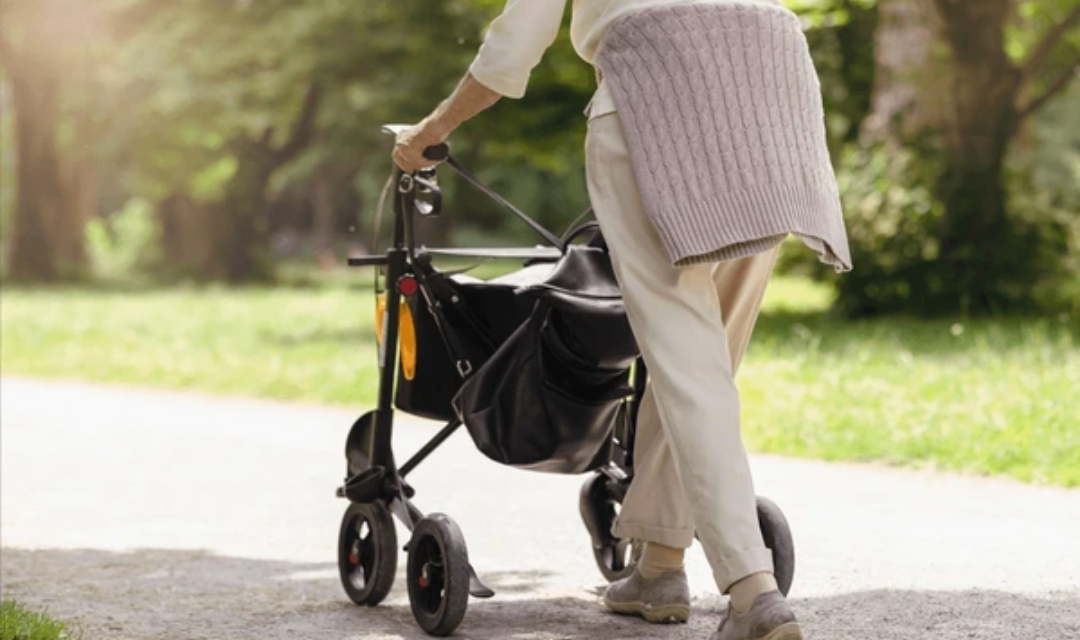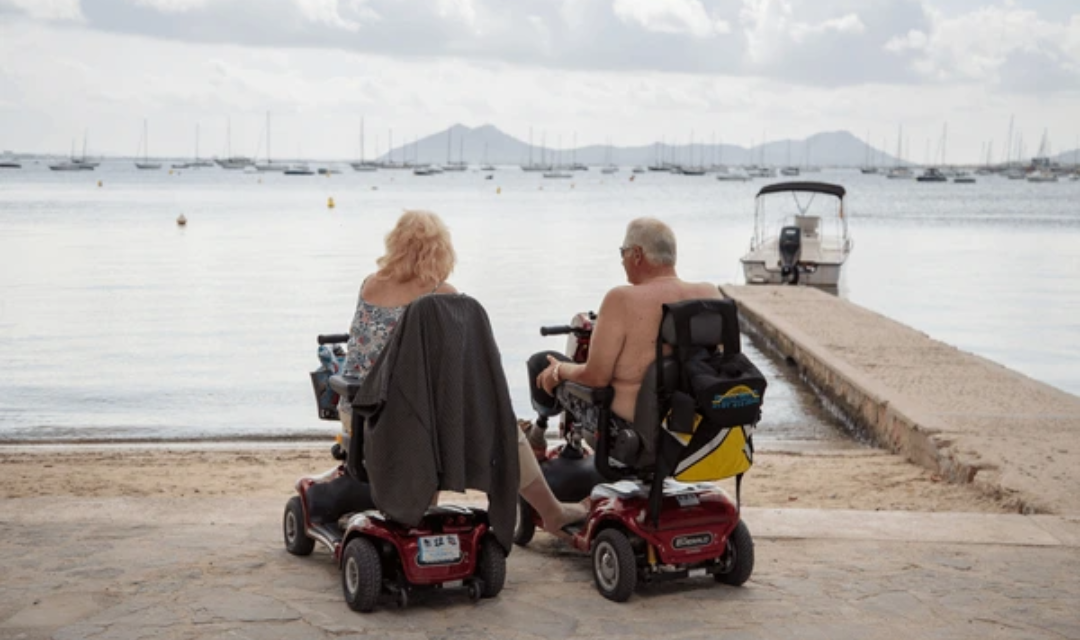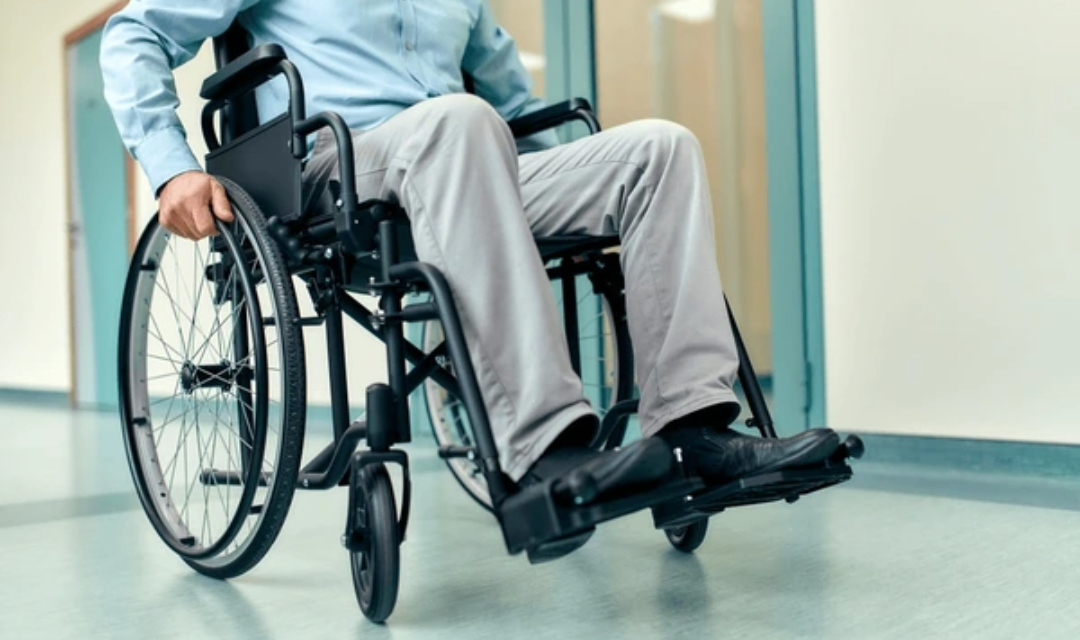19
Aug
Mobility Myths vs. Reality: Life-Changing Stories and What Seniors & Families Must Know
For millions of seniors and their families, the journey toward independence often begins with one simple question:
“Do I really need a mobility aid?”
Yet too often, the answer is clouded by myths, stigma, and misinformation. Seniors delay getting the help they need because they believe elderly mobility aids are unsafe, too expensive, or only meant for the “very old.” Families hesitate as well, fearing they’ll choose the “wrong” solution or waste money on mobility equipment for elderly care that doesn’t truly fit their needs.
The result? Lost independence, increased fall risks, and unnecessary caregiver strain.
Recent findings from the CDC reveal that over 27% of adults aged 65 and older experience significant mobility limitations, yet nearly half delay adopting elderly mobility aids until after a fall or injury (CDC). Similarly, the American Academy of Family Physicians (AAFP) reports that 29.4% of older adults use mobility aids outside the home and 26.2% inside (AAFP).
This guide was designed to set the record straight. We’ll bust the most common myths surrounding mobility equipment for elderly individuals, share inspiring real-life stories, and explain how the right assisted walking devices — from lightweight transport chairs and rollator walkers to versatile 4-wheel scooters — can restore independence and improve quality of life.
Top Mobility Myths Busted
Myth #1 — “Insurance Always Covers Mobility Equipment” ❌
The Reality: While Medicare and private insurance sometimes cover basic durable medical equipment, the rules are strict, limited, and confusing. Many seniors assume everything — from rollator walkers to transport chairs to scooters — will be covered, only to discover partial coverage or outright denials.
Example: Gloria, 74, delayed getting a transport chair for six months because she believed Medicare would cover it. After months of denied claims, she finally purchased the Astra Aluminum Transfer Wheelchair herself — and within a week, she was attending her grandson’s soccer games again.
Quick Tip:
Medicare typically only covers basic wheelchairs when medically necessary. Lightweight, portable, and advanced mobility equipment for elderly individuals often require out-of-pocket payment. That’s why many families turn to transfer chairs designed for seniors to regain independence faster without the stress of long approval processes.
Myth #2 — “Rollator Walkers Are Only for the Weak” ❌
The Reality: Many seniors avoid using assisted walking devices like rollator walkers because they associate them with aging or dependency. But today’s lightweight rollators are built for active lifestyles, not just for those with severe mobility challenges.
Take the Comodita Tipo All Terrain Walker, designed for both indoor comfort and outdoor adventure — whether you’re walking trails, enjoying boardwalks, or strolling through the park. Its built-in seating even offers the freedom to rest anywhere.
Real Story: Sarah, 68, used to skip weekend hikes with her family. After getting the Comodita, she says:
“I didn’t realize how much I was missing until I finally had something that kept up with me.”
Why This Matters: According to the National Institutes of Health, seniors who use properly fitted elderly mobility aids like rollators reduce fall risks by up to 40%, helping them stay independent and active longer.
Myth #3 — “Electric Scooters Are Unsafe Indoors” ❌
The Reality: Early mobility scooters were bulky and difficult to maneuver, but modern 4-wheel scooters are compact, safe, and designed for both indoor and outdoor use.
The EV Rider Transport 4M Foldable Scooter, for example, features intelligent steering sensors that automatically reduce speed during tight turns, ensuring safer navigation even in smaller living spaces.
Real Story: Harold, 77, resisted getting a scooter for years, fearing it would “wreck the furniture.” After trying the EV Rider 4M, he says:
“I can move around my kitchen, living room, and even narrow hallways without bumping into a single thing.”
Pro Tip: If you’re choosing a scooter, look for models with tight turning radii and foldable frames — they make indoor maneuvering effortless while still offering freedom outdoors.
Myth #4 — “Transport Chairs Are Only for Hospitals” ❌
The Reality: Lightweight mobility equipment for elderly individuals, like transport chairs, isn’t just for hospitals or rehab centers — it’s designed for everyday independence at home and beyond.
The LT-1000HB Lightweight Transport Wheelchair is a perfect example. At just 21 lbs, it’s ideal for daily outings, from medical appointments to family dinners, and easy for caregivers to fold, lift, and store.
Real Story: Linda, caring for her father recovering from hip surgery, says:
“Before, every outing felt like a battle. Now, with the LT-1000, it takes us less than two minutes to get out the door.”
Key Insight: Seniors who adopt elderly mobility aids like transport chairs early increase community participation by up to 30%, reducing isolation and improving mental health.
Myth #5 — “All Mobility Aids Are the Same” ❌
The Reality: Not all mobility equipment for elderly care is created equal. Choosing the right solution depends on lifestyle, home setup, caregiver support, and health needs.
For example:
-
The Triumph Essentials Foldable Rollator is perfect for active seniors who need frequent rest breaks while walking.
-
The Nomad Portable Electric Scooter is ideal for frequent travelers, as it’s compact and airline-approved.
-
The Protekt Cambria Convertible Wheelchair suits seniors who want both self-propulsion and caregiver-assisted mobility.
Takeaway: Matching the right assisted walking device to each person’s needs improves safety, reduces caregiver strain, and enhances independence.
According to Harvard Medical School, mobility loss isn’t just a physical limitation—it also leads to social withdrawal, depression, and cognitive decline (Harvard Health). These impacts are seen every day in seniors who delay adopting the right elderly mobility aids.
Real Patient Stories That Inspire
Statistics and research give us insights, but it’s real people’s stories that truly reveal how the right elderly mobility aids can transform lives. These are composite patient experiences inspired by thousands of real journeys—each showing how mobility equipment for elderly individuals can restore independence, prevent injuries, and even bring families closer together.
Story 1: John’s Return to Freedom
At 72, John had always been active in his community—helping organize local events, attending farmer’s markets, and joining weekend picnics. But after a knee replacement surgery, his mobility became severely limited.
At first, John avoided outings altogether, embarrassed by his reliance on others. He described the months after surgery as “the loneliest I’ve ever felt.”
Everything changed when his daughter introduced him to the Nomad Portable Electric Scooter, a compact and airline-approved assisted walking device designed for both indoor and outdoor use. Suddenly, grocery shopping, attending markets, and visiting his friends were no longer exhausting chores—they became enjoyable again.
“I didn’t realize how much independence I’d lost until I got it back,” John says.
“Now I’m at the farmer’s market every Saturday. I even take my grandson to the park again.”
Takeaway: For seniors like John, the right mobility equipment for elderly individuals can mean reclaiming freedom—without sacrificing comfort, safety, or independence.
Story 2: Mary’s Fall Prevention Journey
Mary, 78, always prided herself on staying active and independent. But after two unexpected falls in her bathroom within six months, she became terrified of leaving her bedroom at night. Her confidence was slipping, and so was her quality of life.
Her daughter stepped in and researched options to help prevent further injuries. That’s when they discovered the Triumph Essentials Lightweight Rollator—a modern assisted walking device with built-in stability features, ergonomic handles, and a foldable frame for easy use around the house.
Within weeks, Mary felt transformed. The rollator gave her balance and security she didn’t have before, and her fear of falling eased dramatically.
“I didn’t want to believe I needed help,” Mary admits.
“But now I realize this isn’t just about walking—it’s about living without fear.”
Takeaway: With the right elderly mobility aid, fall risks can be significantly reduced, improving both safety and emotional well-being.
Story 3: Thomas and Caregiver Relief
At 85, Thomas depended entirely on his daughter for mobility support—every transfer from bed to chair, chair to bathroom, and bathroom to dining table required her assistance. Over time, her back pain worsened, and both were becoming overwhelmed.
Their situation changed when they started using the LT-1000HB Lightweight Transport Wheelchair, a versatile mobility solution for elderly care designed for effortless transfers.
Now, Thomas enjoys more independence while his daughter experiences far less physical strain.
His daughter explains:
“It’s like my back got its life back, too. Outings aren’t stressful anymore—we can actually enjoy them together.”
Takeaway: The right mobility equipment for elderly individuals doesn’t just improve seniors’ lives—it also protects caregivers from burnout and injury.
Story 4: Eleanor’s Rediscovered Social Life (Bonus Story)
Eleanor, 81, gradually stopped attending her weekly book club because she struggled walking long distances through crowded community halls. She described feeling “invisible” and disconnected.
After consulting with her doctor, she invested in the Comodita Tipo All Terrain Walker, which combines stability with comfort and allows her to take breaks on its padded seat whenever needed.
“I didn’t think something so simple could change so much,” Eleanor says.
“Now I never miss a meeting, and I even volunteered to host the next one.”
Takeaway: For many seniors, assisted walking devices aren’t just tools—they’re lifelines that help them stay connected, confident, and active.
“To bring these stories to life and offer you expert insights, here’s a short, highly informative video on choosing and using elderly mobility aids safely and confidently.”
The Science of Choosing the Right Mobility Aid
Selecting the right mobility equipment for elderly individuals isn’t just about comfort or convenience—it’s about safety, independence, and quality of life. Research shows that when seniors are matched with the correct elderly mobility aids based on their lifestyle, environment, and health needs, the results are profound:
-
Fall risk decreases by up to 40% when the appropriate assisted walking devices are used (National Institute on Aging).
-
Seniors who adopt the right mobility solutions earlier are 30% more likely to maintain social participation and community engagement (CDC).
-
Mental well-being significantly improves, with reduced feelings of isolation, anxiety, and depression related to mobility loss.
So, how do you know which device is right? Let’s break it down scientifically.
1. Transport Chairs: Lightness Meets Versatility
Best for: Seniors with limited strength or endurance who need caregiver-assisted mobility.
Lightweight transport chairs are engineered for effortless transfers in and out of the home. Models like the LT-1000HB Lightweight Transport Wheelchair are designed to minimize caregiver strain and maximize patient comfort.
Why It Matters:
-
Their portability allows seniors to attend family events, medical appointments, or outdoor activities without overexertion.
-
Studies show that early adoption of caregiver-assisted mobility solutions reduces inactivity-related complications, such as muscle weakness and balance deterioration.
-
For caregivers, these chairs dramatically reduce risks of back injuries during transfers.
2. Rollator Walkers: Active Independence with Built-In Support
Best for: Seniors who can walk but need stability, balance, and resting options.
Unlike standard walkers, modern rollator walkers are assisted walking devices designed for an active lifestyle. Take the Triumph Essentials Rollator, for example—it features ergonomic grips, sturdy wheels, and a built-in seat for resting during longer walks.
Why It Matters:
-
Seniors using rollators are significantly less likely to fall, especially when walking outdoors or navigating uneven terrain.
-
Increased mobility supports cardiovascular health, muscle strength, and mental well-being.
-
Built-in seating promotes social engagement by enabling seniors to participate in events, outdoor activities, and family outings without worrying about fatigue.
For optimal safety, experts recommend working with a physical therapist to ensure rollators and other assisted walking devices are properly fitted and adjusted (Health In Aging). This maximizes stability and minimizes fall risks.
3. 4-Wheel Mobility Scooters: Freedom Without Boundaries
Best for: Seniors seeking maximum independence and longer-distance mobility.
Modern 4-wheel mobility scooters are compact, stable, and designed for both indoor maneuverability and outdoor adventures. The EV Rider Transport 4M and Nomad Portable Scooter allow seniors to shop, travel, and attend social gatherings without relying on others.
Why It Matters:
-
A clinical study published in the Journal of Aging and Health found that seniors who regularly used scooters were 25% more likely to maintain independent living arrangements after age 75.
-
Features like adjustable seating, tight turning radii, and intelligent speed sensors make them ideal for safe use both indoors and outdoors.
-
Restoring independent mobility often leads to measurable improvements in confidence and emotional well-being.
4. The Mind-Body Connection: Why the Right Device Matters
Beyond physical safety, matching the right elderly mobility aid to each individual’s needs impacts mental health and overall quality of life:
-
Confidence Restored: The fear of falling often leads to social withdrawal. Personalized solutions eliminate this barrier.
-
Caregiver Relief: Properly matched equipment reduces caregiver fatigue and injuries, improving family dynamics.
-
Cognitive Benefits: Studies show seniors who maintain active mobility exhibit slower cognitive decline compared to those with restricted movement
“Scientific evidence shows that mobility isn’t just physical—it’s deeply tied to brain health. A major review found that staying mobile and active can protect cognitive function and slow decline as we age, while a 9-year longitudinal study revealed that mobility limitations significantly accelerate cognitive decline in older adults.”
https://pmc.ncbi.nlm.nih.gov/
Mobility Aid Comparison Guide: Find the Right Solution for Your Needs
Choosing the right mobility aid isn’t just about comfort — it’s about safety, independence, and quality of life. Whether you need a rollator walker for daily balance, a lightweight transport chair for assisted mobility, or a 4-wheel scooter for complete independence, understanding the differences is crucial.
The comparison chart below breaks down the key features, benefits, and best-use scenarios for each device, helping seniors, caregivers, and families make confident, informed decisions based on real-life needs and environments.
| Feature / Consideration | Rollator Walkers | Transport Chairs | 4-Wheel Mobility Scooters |
|---|---|---|---|
| Best For | Seniors who can walk but need balance, stability, and rest breaks | Seniors with limited walking ability who require caregiver assistance | Seniors seeking maximum independence for longer distances and daily outings |
| Primary Purpose | Active mobility with built-in support and resting options | Safe, lightweight mobility with caregiver handling | Full indoor/outdoor self-mobility without constant assistance |
| Walking Ability Needed | Moderate — user walks independently | Minimal — caregiver pushes chair | Low — scooter propels automatically |
| Independence Level | High, supports active lifestyles | Medium, designed for assisted mobility | Very high, allows complete freedom of movement |
| Safety Features | Ergonomic hand brakes, sturdy frames, built-in seats, and anti-slip wheels | Seat belts, heel loops, locking casters, and ultra-stable frames | Speed control sensors, tight turning radius, stability systems, and LED safety lights |
| Indoor Use | Excellent for narrow hallways and small spaces | Excellent — compact and easy to navigate | Varies: choose models with a turning radius <50” for safe indoor use |
| Outdoor Use | Ideal for smooth sidewalks, boardwalks, and paved paths | Limited — better for short transfers than long-distance travel | Perfect for parks, shopping, sidewalks, and moderate outdoor terrain |
| Portability & Storage | Lightweight, foldable, easy to carry or store in small closets | Ultra-lightweight, folds flat for trunk storage and travel | Some models fold, but scooters are bulkier and require vehicle loading |
| Weight Capacity | ~250–300 lbs | ~220–275 lbs | ~250–300 lbs |
| Caregiver Effort | Low — users propel themselves | Moderate — caregivers push chair | None required — scooters are self-propelled |
| Ideal Environments | Home, community centers, malls, smooth outdoor surfaces | Medical visits, short outings, assisted transfers indoors/outdoors | Active lifestyles, long shopping trips, outdoor events, vacations |
| Best Example Models | Triumph Essentials Rollator / Comodita Tipo | LT-1000HB Transport Chair / Astra Aluminum | EV Rider Transport 4M / Nomad Portable Scooter |
Frequently Asked Questions On Mobility Aids
What are the safest mobility aids for elderly people at home?
Lightweight rollator walkers, compact transport chairs, and modern 4‑wheel scooters offer the safest options. Features like ergonomic grips, tight turning radii, and built-in stability systems make them both practical and secure.
Do I need a doctor’s prescription to get mobility equipment with insurance?
Yes—most insurance providers, including Medicare, require a prescription or medical justification that documents mobility limitations before approving equipment like transfer chairs or scooters.
How should I choose between a rollator walker, transport chair, or scooter?
Choose based on mobility levels and support needs:
-
Rollator Walker: For those who can walk but need balance and rest support.
-
Transport Chair: For individuals with limited walking ability needing caregiver assistance.
-
4-Wheel Scooter: For seniors seeking full independence and longer-distance mobility.
Are mobility scooters safe for indoor use?
Absolutely. Modern scooters, such as the EV Rider Transport 4M, are foldable, compact, and feature intelligent steering—making them safe and practical indoors while still offering outdoor versatility.
Expert Insight — Dr. Emily Harper, Geriatric Physical Therapist
“The key to preventing falls and preserving independence is early, personalized mobility support. Matching the right mobility aid to a senior’s physical and environmental needs can cut fall-related hospitalizations by up to 50% and significantly improve emotional well‑being.”
Key Takeaway
The science is clear: mobility equipment for elderly individuals isn’t one-size-fits-all. Personalized solutions—from lightweight transport chairs to rollator walkers to 4-wheel scooters—create a ripple effect of benefits: fewer injuries, more independence, stronger mental health, and better quality of life.
Conclusion: Empowering Seniors & Families
Choosing the right mobility equipment for elderly individuals isn’t just about improving movement—it’s about restoring confidence, protecting independence, and enhancing quality of life.
Too often, myths and misinformation delay the decisions that matter most. Waiting until after a fall, injury, or hospitalization can make mobility challenges harder to overcome. But the science and real-life stories prove one thing clearly: early adoption of the right solutions leads to better outcomes for seniors and caregivers alike.
Whether it’s lightweight rollator walkers for staying active, versatile transport wheelchairs for effortless outings, or compact 4-wheel scooters for full independence, today’s elderly mobility aids offer smarter, safer, and more personalized options than ever before.
Take action now—don’t wait for mobility challenges to escalate. By exploring the right assisted walking devices early, seniors and families can prevent injuries, maintain freedom, and embrace a more connected, confident life.







